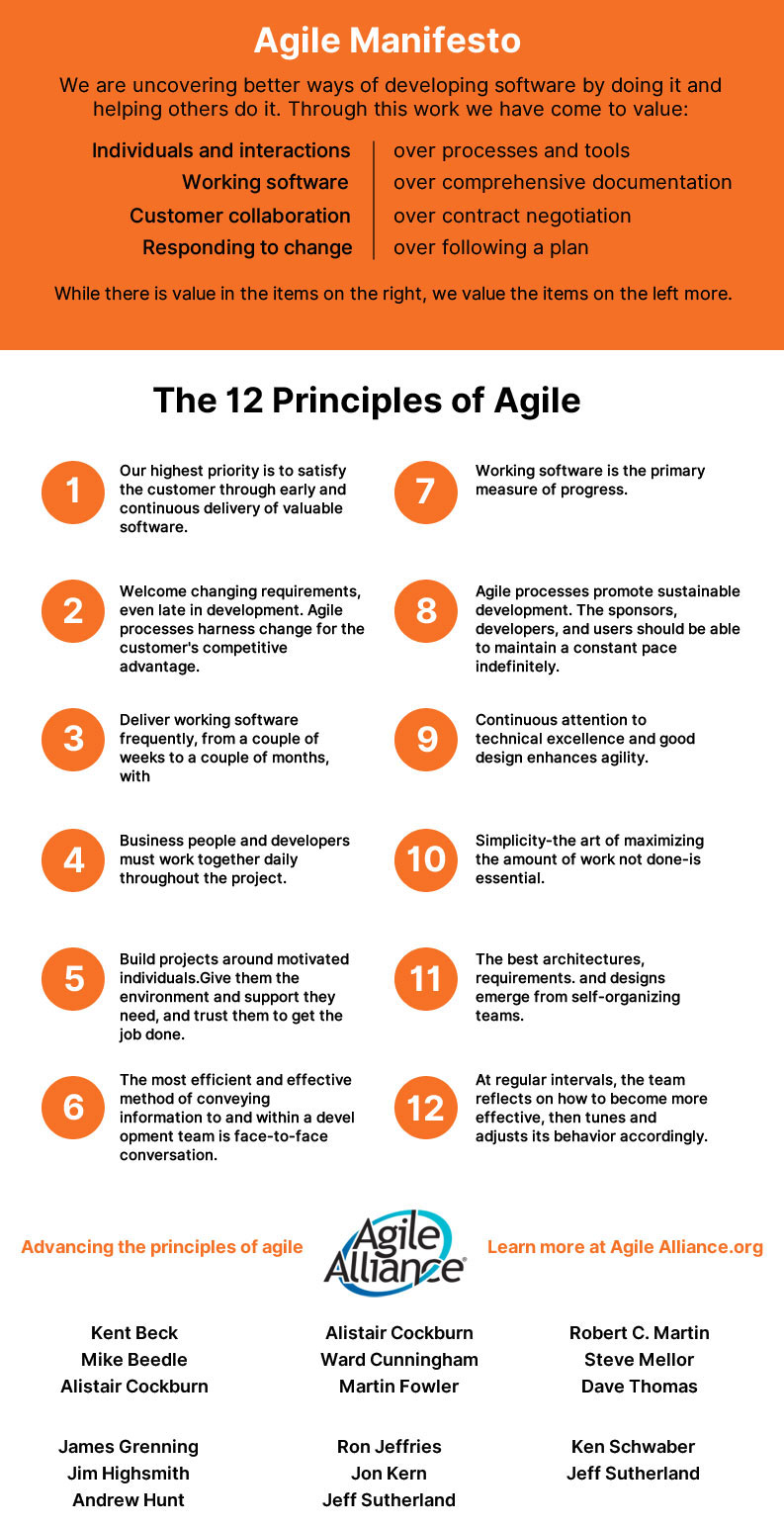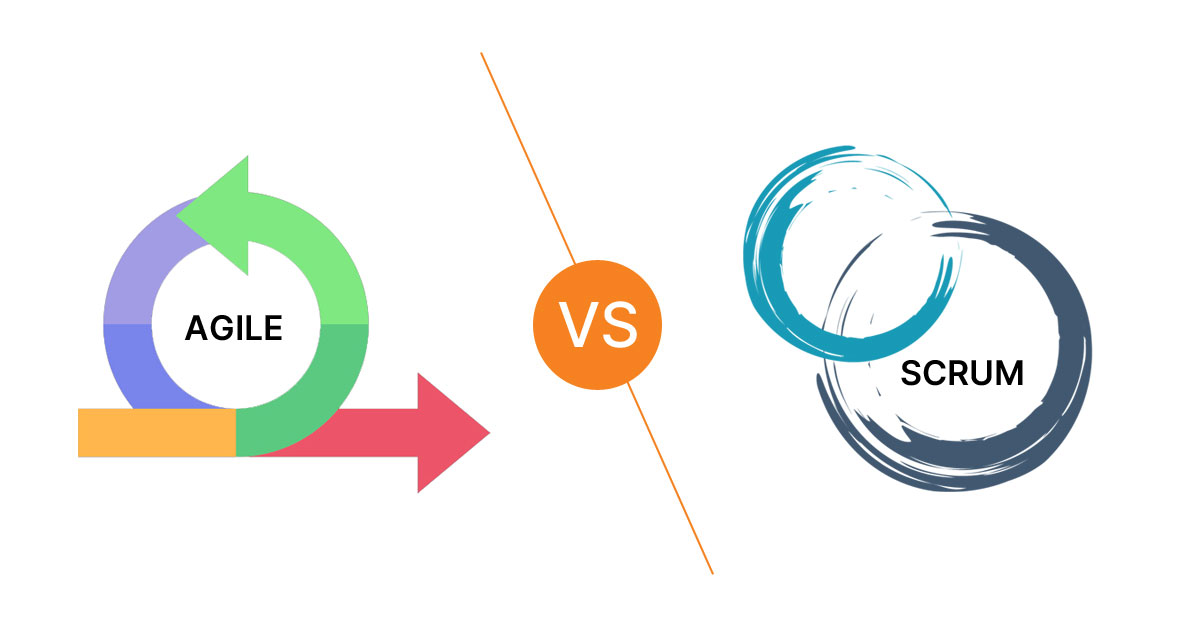“If we have a fully defined backlog, we no longer have a true Agile Product Development situation. Instead, we have a project.” ~ Ron Jeffries.
“Any Scrum without a working product at the end of a sprint is a failed Scrum.” ~ Jeff Sutherland.
Software project management is a complicated process requiring many decisions that shape the development trajectory. As a result, picking the correct development framework is critical.~ Jeff Sutherland.
There are numerous techniques to choose from which are best suited to specific project types. Agile and Scrum are the two most popular (and often misunderstood) project management methodologies. If we consider their similarities, it’s easy to get them mixed up, yet they’re two very different concepts.
Here’s an overview of what Agile and Scrum represent in project management, how they differ, and how to pick the correct technique for your project.
What is Agile?
Agile project management is a method that focuses on completing tasks in small increments. It’s frequently employed in projects where some volatility or unpredictability is anticipated. Suited primarily for fast-moving firms that work as per customer or market feedback OR are more feature driven OR are growing and building in a new space.
Agile software development is iterative and incremental. Agile takes a more open and flexible approach to modifications and iterations, allowing them to happen when needed.
The Agile Manifesto lists 12 principles for operating a project using the Agile development methodology. You may use agile concepts to help you shape your life as well.
| Pros | Cons |
|---|---|
| Changes are easy to accommodate and accept at any point during the project development cycle. | Workflow coordination is still being determined. |
| The team may focus on faster, higher-quality development by breaking the project into iterations. | Because agile teams are typically small, assembling the ideal group can take time and effort. |
| Strong team contact and collaboration are fostered. | Complex planning during the beginning of the project, when you can access resources, form teams, and express an overall project vision. |
| Encourage users and team members to provide feedback throughout the project to improve future iterations. | Only experienced software engineers, testers, and managers should be working on the project. |
| The project’s high flexibility and continual iterations allow you to modify your project to your customer’s needs at any time. | Lack of Long-term planning. |
What is Scrum?

Source: Agile Alliance
Scrum is a prominent Agile approach that is becoming more widely used. Scrum is a sub-group of Agile and is regarded as the most common framework for adopting Agile. This Scrum model is a tool for managing complicated software and product development based on iterative software development concepts.
Sprints (time-fixed iterations) enable the development team to ship software frequently, resulting in new plans and actions being defined by key stakeholders and teams at the end of each sprint, which drives performance.
Here are the four steps in each sprint—
- Sprint Planning,
- Daily Scrum,
- Sprint Review,
- Sprint Retrospective
Team members will comment on their updates and future goals during Scrum meetings so that the entire team is aware of everyone’s role. It can provide input on each aspect of the project they are involved in.
| Pros | Cons |
|---|---|
| Daily stand-up meetings increase transparency and project visibility. | Because of the lack of a fixed end date, scope creep is a risk. |
| Team accountability is highly responsible because the Scrum team does not have a project manager. telling them what to do & when to do it. | Strong leadership is required. |
| With constant feedback, it’s easy to accommodate changes. | Team members must be highly skilled and dedicated. |
| Constant communication keeps the team informed of any difficulties or changes as soon as they occur, allowing them to focus on quality. | Inaccuracies, delays, and financial loss can result from poorly-stated jobs. |
| Regular status checks help to keep risk exposure to a minimum. | Daily meetings might stifle productivity if they aren’t well-managed. |
Agile vs. Scrum: What’s the Difference?
Agile & Scrum are very similar, as both rely on an iterative process, regular client involvement, and collaborative decision-making. The primary distinction between Agile and Scrum is the implementation measure
- Agile is leadership driven, whereas Scrum operates with a self-organizing, cross-functional team.
- Agile is Face-to-Face driven, spontaneous, accommodating to the whim of development, and not bound by calendar meetings, whereas Scrum brings in the tenet of standup calls to map progress.
- Agile delivers the software regularly for feedback, while Scrum delivers the software after each sprint.
And where Agile is a project management ideology based on a core set of values or principles, Scrum is a specific Agile technique for project management.
Other noteworthy distinctions between Agile and Scrum are-
- Scrum is an Agile methodology, whereas Agile is a concept.
- Scrum is divided into smaller sprints with smaller deliverables, whereas Agile delivers everything at the end of the project.
- Agile involves members constantly, while a Scrum project team includes specific roles, such as the Scrum Master and Product Owner to hash objectives.
- Agile brings attention to detail in design and tech, whereas Scrum is time-boxed and brings iterative development.
Although Scrum is an Agile technique, Agile does not always mean Scrum—many distinct approaches adopt an Agile approach to project management.
To Wrap Up
Companies are rapidly hiring dedicated Agile teams and Scrum specialists to keep up with today’s technology market—and they’re doing quite well.
The Agile technique is ideal if the project’s success is getting it to market first and then iterating based on user input. Scrum is the best-suited Agile model if you prefer structure within your Agile model that leads your team to follow some set principles.
It would help if you chose your decision based on the project’s type, team size, and delivery deadline. Furthermore, it would be best if you considered these techniques in the context of your work and the end goal you want to achieve.
There is no hard & fast rule about using the same model for every project. And you’d require a team who can work as per your requirements. So, what are you waiting for? Netsmartz has the most talented team to manage your project like a pro.
Summary
Kickstart Your Project With Us!
Blog
Popular Posts
CONTACT US
Let's Build Your Agile Team.
Experience Netsmartz for 40 hours - No Cost, No Obligation.
Connect With Us Today!
Please fill out the form or send us an email to
 Don't Miss Out:
Don't Miss Out: 







